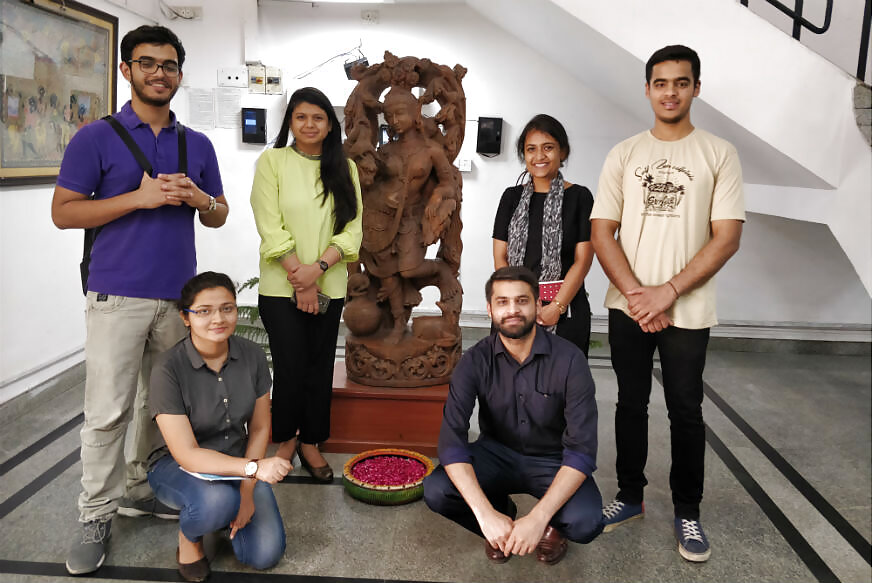
views
New Delhi: The 20-year-old Ankur Bhambri, student of Maharaja Agrasen Institute of Technology, is the lone Niti Aayog intern for the Digital Transformation Index project of the Ministry of Defense.
He is mentored by Commander Sujeet Samdha in the ministry. Bhambri has created a website using new concepts for the Acquisition Decision Support System. In his project, he has used Python Django, which promises more security than the PHP.
“When I became the Niti Aayog intern to work on this project for the Ministry of Defense no one knew about Python Django. It gives output on the basis of data and provides greater security than PHP. So I made things more secure in the defense ministry,” said Bhambri.
Bhambri, though a lone member on this project, is not the only young intern with Niti Aayog. He is joined by many others under the Niti Internship Scheme that calls for students to take part in policy and government related issues.
Anna Roy, from Niti Ayog, said, “It is a win-win situation. On one hand they know about government and policies and on the other hand we get the fresh perspective from the students in various streams.”
Roy has a team of youngsters on the ambitious project of ‘Women Entrepreneurship Program’ that was envisaged at the time of Global Entrepreneurship Summit, 2017.
A day in the life of an intern
The interns are undergraduates or research scholars working with Roy on ‘Women Entrepreneurship Platform’. The internship scheme is open for all involved in academic activities with recognised institutions. The think tank provides them space and WiFi. The interns have to get their own laptops and work on different verticals of the project - technical, social and financial. Their day starts at 8:30 in the morning and ends late in the evening. As of now, the first thing they have to do is check if they have received any queries from women entrepreneurs.
“We resolve them, call our partners, convince them for products that women entrepreneurs want and thus begins our day,” said Pallavi Chaudhury, who is doing a PhD in entrepreneurship development through IIM Ahmedabad startup incubator programme in Rajasthan.
Pallavi is working on Atal Innovation Mission and as well as women entrepreneurship platform. This is followed by making a list of women entrepreneurs, inquiring what they want to do, get in touch with the partners and organise partners’ meet, round tables on a daily basis. In certain meetings, they have to meet Amitabh Kant, chairman Niti Aayog. They are asked for opinions in front of other experts present.

What they bring to the table
Sakshi Jalan, 20, is working on ‘Schemes’ segment of the Women Entrepreneurship Platform (WEP). This segment provides comprehensive information about the existing Schemes (that provides different types of incentives to the Women/Women Entrepreneurs) of the Central and State Governments.
“I am with the finance vertical, and have prepared an in-depth report on how the central government schemes for women entrepreneurship has helped them. What has been achieved so far,” she Sakshi.
She is working out ways on how to incorporate the banks associated with them on WEP platform “so women can avail benefits. Make WEP financially inclusive for women”.
Focused on cooperative federalism, Akash Narang, who graduated from National Law University Bhopal in 2015, is making presentations which are being shown to the advisory council.
“I am also overlooking the partner onboarding process since the women entrepreneurship platform is largely an ecosystem which is giving facilitation and support to women entrepreneurs by bringing services of the private sector,” he said. Busy identifying the partners and checking out the deliverables, he is part of partnership team, social outreach and marketing team.
Giving the project the technical expertise is Bhavya Sharma of Maharaja Agrasen Institute of Technology.
“We can’t give individual help to all on women entrepreneurship platform – this is where Machine Learning helps, can device steps to reach all,” said Sharma.
For Future, one of the major objectives of this scheme is to allow young talent to be associated with the work of Niti Aayog for “mutual benefits.” The interns shall have the opportunity to know about Niti Aayog, and contribute to the formulation of the government policies. Narang has basically come here to understand working at Niti Aayog and use it in his future endeavors.
“What are the best practices? How are facilitations provided to new businesses? This is why I joined the internship scheme,” he said. He would want to use this experience to go ahead and “start something of my own,” he said.














Comments
0 comment